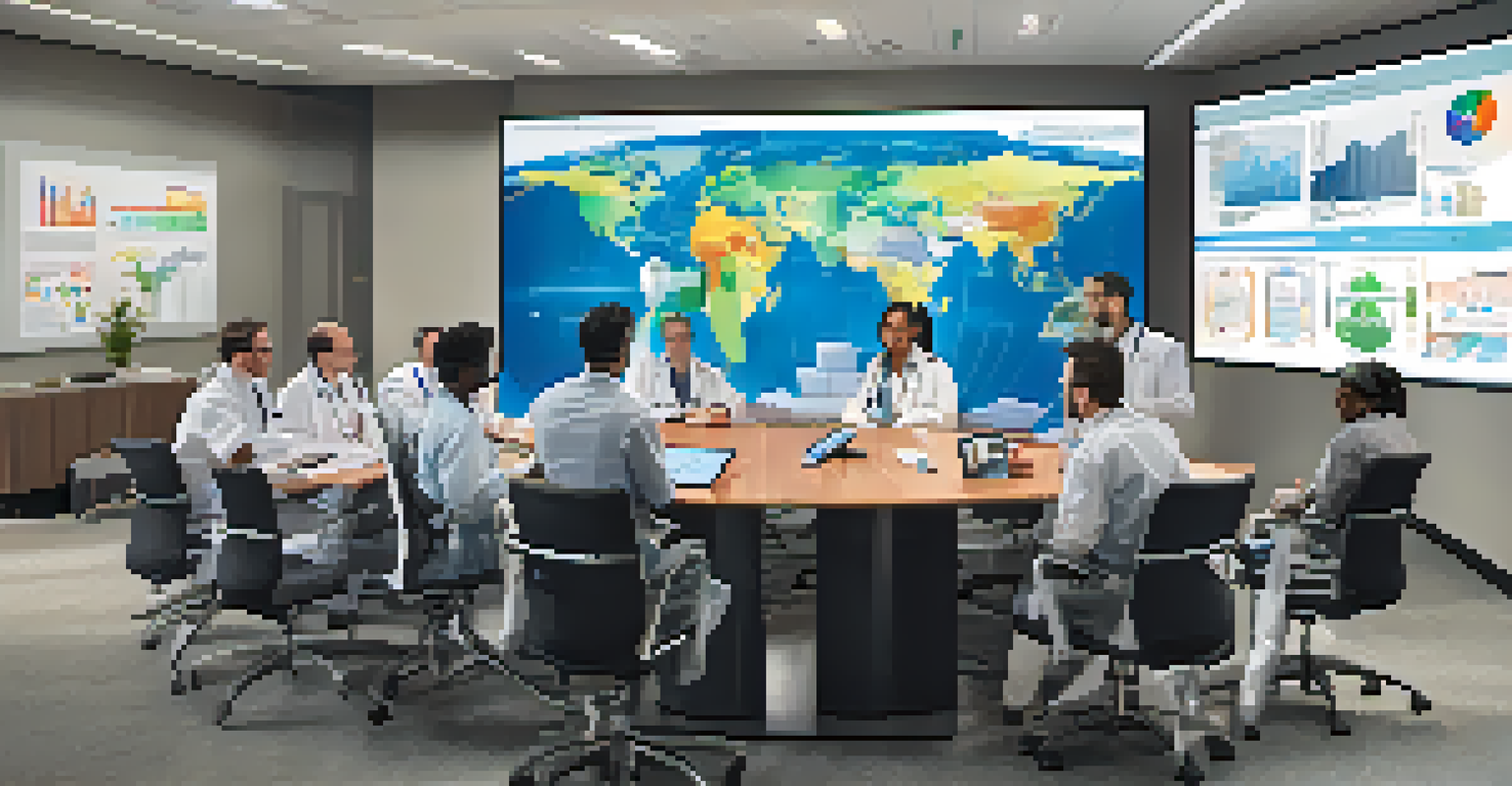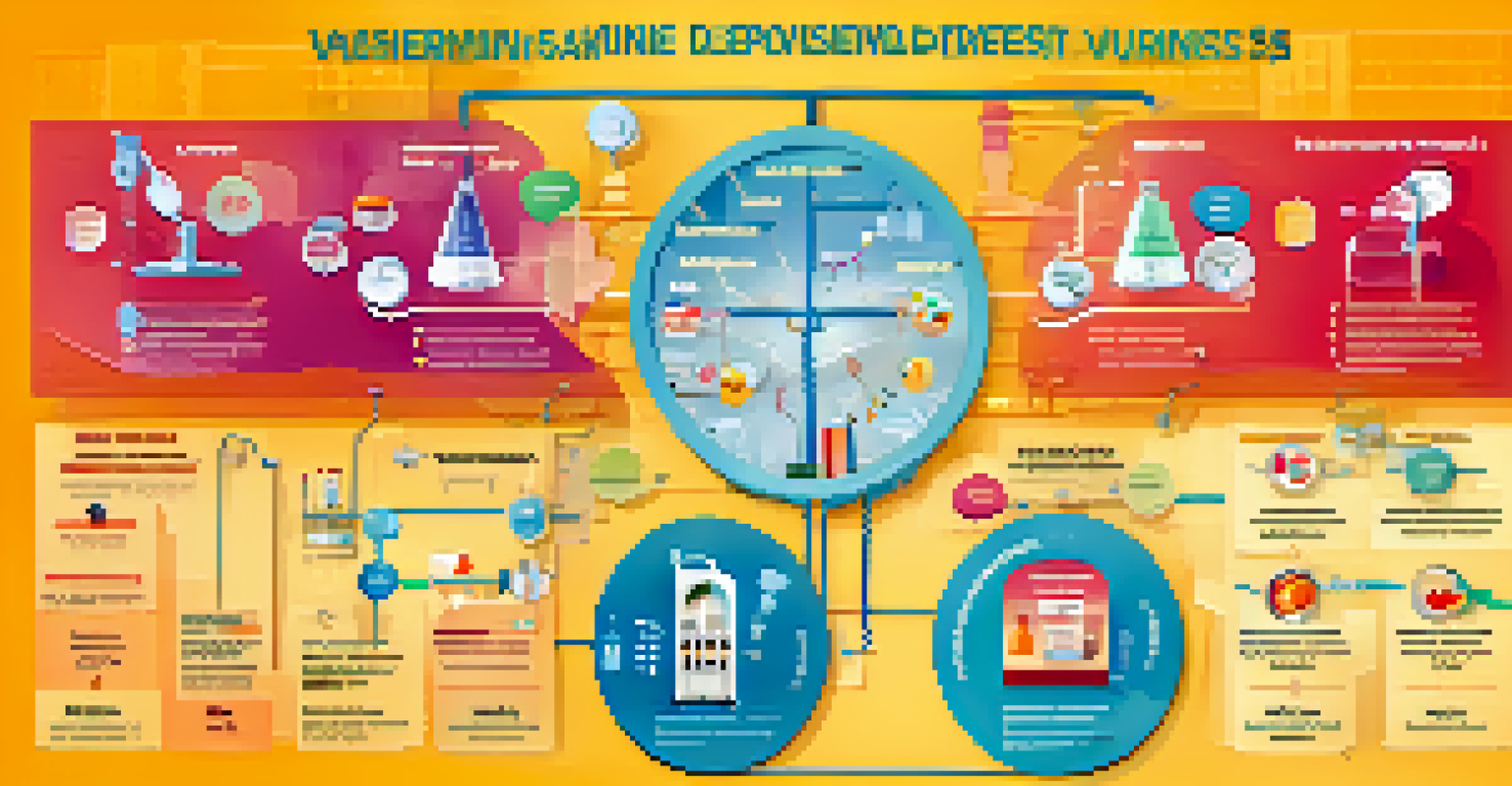Challenges in Vaccine Development: Overcoming Barriers

Understanding the Complexity of Vaccine Development
Vaccine development is a multifaceted process that involves rigorous research, testing, and regulatory approval. Each stage of this journey requires a deep understanding of immunology, microbiology, and even public health dynamics. The complexity can be likened to piecing together a massive puzzle; every piece must fit perfectly to create a safe and effective vaccine.
Vaccines are the tugboats of preventive health.
From the initial discovery phase to clinical trials, scientists face numerous hurdles that can delay progress. For instance, identifying the right antigens—substances that provoke an immune response—is a critical step that can take years. This phase sets the foundation for everything that follows, underscoring the importance of precision and patience.
Moreover, vaccine development is not just about science; it’s also about collaboration. Researchers, pharmaceutical companies, and regulatory bodies must work together seamlessly. This collaboration can sometimes be challenging due to differing priorities and objectives, making clear communication essential.
Regulatory Challenges: Navigating the Approval Maze
One of the most significant hurdles in vaccine development is navigating the regulatory landscape. Regulatory agencies, like the FDA in the U.S. or EMA in Europe, have stringent requirements to ensure safety and efficacy. This extensive review process is crucial, but it can often feel like a maze for researchers trying to bring their vaccines to market.

The approval process can take years, and during this time, public health needs may change rapidly. For example, the urgent need for a COVID-19 vaccine led to accelerated approval pathways, but such speed must not compromise safety. This balancing act between urgency and thoroughness is a constant struggle in vaccine development.
Vaccine Development is Complex
The journey of vaccine development involves intricate scientific research, regulatory navigation, and collaboration among various stakeholders.
Additionally, each country has its regulatory framework, which adds layers of complexity for vaccines intended for global distribution. Manufacturers must adapt to varying requirements, which can slow down the process and increase costs. Understanding these regulatory nuances is vital for successful vaccine rollout.
Funding and Financial Constraints in Vaccine Research
Developing a vaccine is an expensive endeavor, often running into the billions of dollars. Securing adequate funding can be one of the biggest challenges researchers face. This financial hurdle can stifle innovation and delay the development of potentially life-saving vaccines.
The greatest weapon against stress is our ability to choose one thought over another.
Many vaccine projects rely on government funding, philanthropic support, and private investments. However, funding can be unpredictable and is often tied to public or political interest. For instance, during health crises, there may be a surge in funding, but this can dwindle once the immediate threat subsides, leaving projects in limbo.
Moreover, investors typically seek a return on their investment, which can lead to prioritizing certain vaccines over others, particularly those with higher profit potential. This market-driven approach can sometimes overlook vaccines for less profitable diseases, creating significant gaps in global health.
Public Perception and Vaccine Hesitancy Issues
Public perception plays a critical role in the success of vaccine development and implementation. Vaccine hesitancy, or the reluctance to vaccinate despite the availability of vaccines, poses a significant barrier. Misinformation and fears—whether based on safety concerns or distrust in pharmaceutical companies—can undermine vaccination efforts.
To combat this issue, effective communication strategies are essential. Health authorities and scientists must engage with communities, addressing concerns transparently and providing factual information. Building trust can help mitigate hesitancy and encourage vaccination uptake.
Funding Challenges Hinder Progress
Securing financial support for vaccine research is difficult, often leading to delays and prioritization of more profitable projects.
Furthermore, social media has amplified both misinformation and educational efforts. While it can spread false narratives quickly, it also serves as a platform for health professionals and advocates to share accurate information and counteract myths. Harnessing this tool effectively can play a pivotal role in public health campaigns.
Technical Challenges in Vaccine Formulation and Delivery
Creating an effective vaccine requires not only the right antigens but also proper formulation and delivery systems. This means finding the right combination of ingredients to ensure the vaccine is both safe and effective. Technical challenges in this area can significantly impact the overall success of the vaccine.
For example, some vaccines require refrigeration, which can complicate distribution, especially in low-resource settings. If a vaccine cannot be stored or transported effectively, its impact is severely limited. This logistical hurdle emphasizes the need for innovative delivery solutions, such as freeze-dried formulations.
Additionally, the development of adjuvants—substances that enhance the body's immune response to the vaccine—adds another layer of complexity. Researchers must carefully evaluate which adjuvants work best without compromising safety. This intricate balancing act is crucial to ensure that vaccines provide long-lasting protection.
Global Collaboration: A Key to Overcoming Barriers
In the face of global health challenges, collaboration across borders has become increasingly vital. The COVID-19 pandemic underscored this need, as countries, researchers, and organizations united to share data, resources, and expertise. Such collaborative efforts can significantly accelerate vaccine development and distribution.
For instance, the COVAX initiative aimed to ensure equitable access to vaccines worldwide, demonstrating how pooling resources can help overcome financial and logistical barriers. This cooperative approach is essential to address global health disparities and ensure that vaccines reach all populations.
Public Trust is Crucial for Uptake
Building trust through effective communication is essential to overcome vaccine hesitancy and ensure successful public health outcomes.
However, fostering collaboration requires overcoming geopolitical tensions and ensuring transparent communication. Building relationships based on trust and shared goals is crucial for effective international cooperation in vaccine development and distribution.
The Role of Innovation in Vaccine Development Challenges
Innovation is at the heart of overcoming the challenges faced in vaccine development. New technologies, such as mRNA vaccine platforms, have revolutionized how vaccines are created and deployed. These advancements can streamline development processes and enhance vaccine efficacy.
Moreover, innovative approaches like artificial intelligence and machine learning are being utilized to predict vaccine candidates and optimize clinical trials. These technologies can analyze vast data sets quickly, identifying potential hurdles before they arise, ultimately saving time and resources.

However, embracing innovation also comes with its own set of challenges, including the need for ongoing research and development funding. Balancing innovation with traditional methods is crucial to ensure that vaccine development is both cutting-edge and grounded in proven practices.